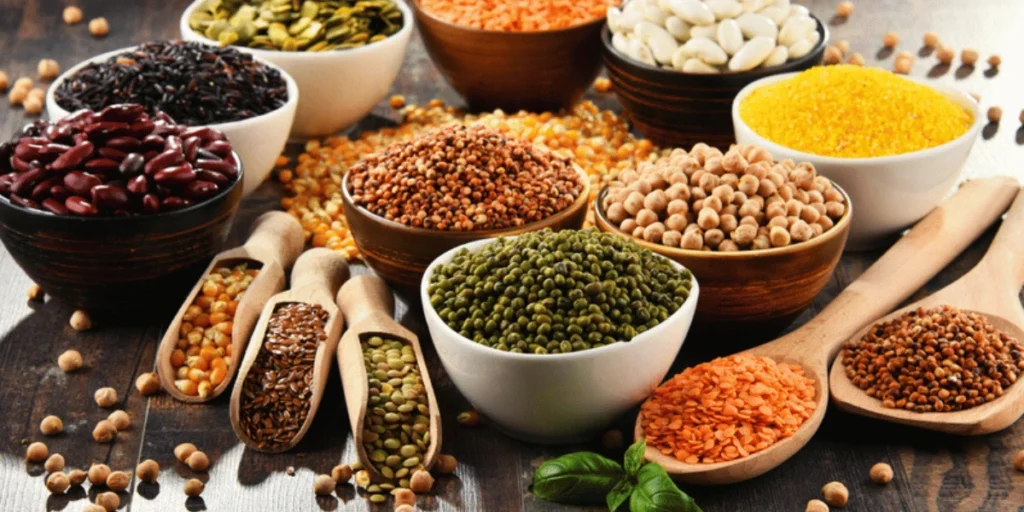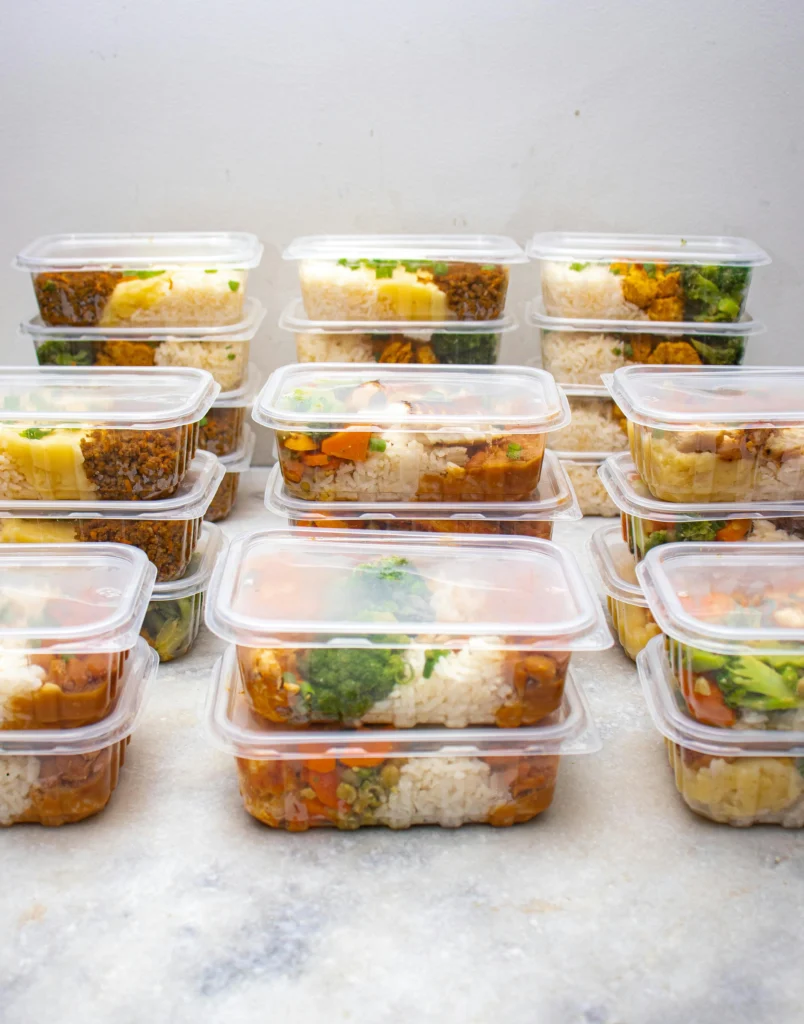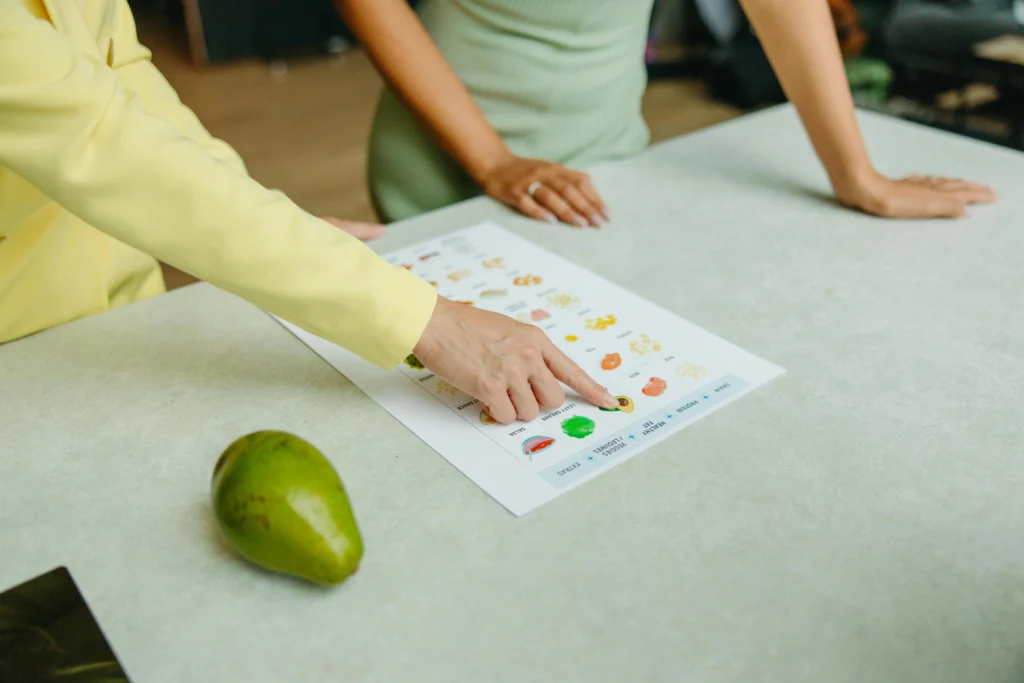Introduction
Here’s your beginner’s step-by-step guide on how to start an easy plant-based diet plan
Did you know that people who eat a lot of plants are 32% less likely to get heart disease?
That’s just one of the incredible benefits waiting for you!
If you want to switch to a plant-based lifestyle but feel unsure about starting, you’re in the right spot.
You don’t have to make starting a plant-based diet complicated or intimidating.
I’ve helped many people make this significant change. I’m here to guide you through each step.
This guide helps you make a simple, plant-based meal plan. It’s great for your health, the environment, and animal welfare.
It’s designed to fit your lifestyle and budget.
What is a Plant-Based Diet? Understanding the Basics
Initially, I found myself confused about what plant-based eating truly meant. Was it the same as going vegan? Could I still eat my favourite foods?
If you’re asking yourself these same questions, don’t worry – you’re not alone!
What Exactly Is a Plant-Based Diet?
A plant-based diet focuses on foods that come primarily from plants. This includes fruits, vegetables, nuts, seeds, oils, whole grains, legumes, and beans.
What surprised me most is that plant-based eating doesn’t mean you have to give up all animal products. This approach is different from strict vegan diets.
It means putting plants at the centre of your meals. You can cut back on how many animal products you eat based on your particular goals.
Harvard Health explains that plant-based diets focus on whole, unprocessed plant foods. They also reduced their use of processed ingredients.
Plant-Based vs. Vegan: What’s the Difference?
I get this question constantly, so let me clear it up:
Plant-based diets focus on whole plant foods, allowing for flexibility and variety. Some people include occasional animal products, while others eliminate them.
Vegan diets exclude entirely all animal products – no meat, dairy, eggs, or honey. This extends beyond food to lifestyle choices, such as clothing.
What I love about plant-based eating is its flexibility. The Academy of Nutrition and Dietetics’ 2025 position on vegetarian diets states that a well-planned plant-based diet can provide all the necessary nutrients.
Why Try Plant-Based Eating?
The health benefits amazed me when I first learned about them. Research shows that plant-based diets reduce cardiovascular disease risk by 32% – that’s incredible!
Additionally, plant-based eating can help with:
- Weight management and improved energy levels.
- Better heart health and lower cholesterol.
- Reduced risk of type 2 diabetes.
- Improved digestion from increased fibre intake.
Getting Started Is Easier Than You Think
You don’t need to change everything overnight.
Start by making one meal per day plant-based, or try “Meatless Monday.“ Focus on adding delicious plant foods rather than worrying about what you’re removing.
The Mayo Clinic’s guide indicates that small changes in a plant-based diet can have a significant impact.
Plant-based eating isn’t about perfection – it’s about progress.
Plant-forward meals are great for your health. They help the environment, too.
So, whether you care about health, the planet, or want to try something new, every plant-based dish is a good choice!
Essential Plant-Based Foods to Stock Your Pantry
Initially, I felt overwhelmed at the grocery store as I began my plant-based journey.
What should I buy? How do I stock my pantry for success?
After years of cooking with plants, I’ve found that the right staples make a significant difference.
Protein Powerhouses That Last
First, I always keep my pantry stocked with plant-based protein sources.
Dried beans, lentils, and chickpeas are must-haves. They’re affordable, versatile, and rich in nutrients. Additionally, canned versions are perfect for quick meals when you’re short on time.

Next, I recommend stocking nuts and seeds, such as almonds, walnuts, chia seeds, and hemp hearts. These provide healthy fats and protein while adding amazing texture to meals.
Whole Grains for Energy
Furthermore, whole grains are crucial for sustained energy. I never run out of quinoa, brown rice, oats, and whole grain pasta. These plant-based foods form the foundation of countless satisfying meals.
Flavour Enhancers
Moreover, don’t forget the flavour boosters!
Nutritional yeast gives a cheesy flavour. Tahini, nut butters, and various spices transform basic ingredients into delicious meals.
Plant-based pantry staples like these help you make healthy, tasty meals anytime. With these essentials on hand, transitioning to plant-based eating becomes effortless and enjoyable!
Week 1: Your First Steps to Plant-Based Success
I’ll be honest – my first week of plant-based eating felt a bit overwhelming.
However, looking back, I realise I made it way more complicated than it needed to be!
Let me share the simple approach that works for plant-based beginners.
Start Small, Win Big
First, I recommend choosing just one meal per day to make completely plant-based. For instance, breakfast is often the easiest place to start. You may also try oatmeal with nuts and berries, or a smoothie packed with greens and fruit.
Simple Meal Swaps
Next, focus on easy plant-based swaps for foods you already love.
Try substituting lentils for ground beef in pasta sauce. You can also replace dairy milk with oat milk in your morning coffee.
Plan for Success
Moreover, I’ve found that plant-based meal planning is crucial during the first week. Spend Sunday preparing a big batch of quinoa, chopping vegetables, and cooking beans. This way, you’re set up for success throughout the week.
Be Patient With Yourself
Finally, remember that transitioning to plant-based eating is a journey, not a destination. Some meals will be excellent, others might flop – and that’s normal!
The key is to stay curious and celebrate every small victory along the way.
Creating Balanced Plant-Based Meals That Satisfy
I used to think plant-based meals would leave me hungry an hour later. Boy, was I wrong!
When I learned to make balanced plant-based meals, I found they were more satisfying than my old favourites.
The Magic Formula for Satisfaction
I’ve learned that satisfying plant-based meals need the right components.
Think of it like building blocks. You need protein, healthy fats, complex carbs, and fibre. These keep you full and energised.
The Plant-Based Plate Method
First, I always fill half my plate with plant-based vegetables – both raw and cooked. These provide essential vitamins and that crucial fibre that keeps you satisfied.
Next, I set aside a quarter of my plate for plant-based proteins. I choose beans, lentils, tofu, or tempeh.
I also save the last quarter for whole grains, such as quinoa, brown rice, or sweet potatoes. These complex carbohydrates give me lasting energy without the crash.
Don’t Forget the Healthy Fats
Additionally, I’ve discovered that healthy fats are essential for satisfaction. A sprinkle of nuts, a dollop of avocado, or a drizzle of tahini transforms a good meal into an amazing one. These fats help your body absorb nutrients and keep hunger at bay for hours.
Building Complete Proteins
Moreover, I used to worry about obtaining complete proteins in a plant-based diet.
I found that mixing different plant proteins during the day works well.
Beans with rice or hummus with whole-grain pita give you all the essential amino acids.
The result? Nutritious plant-based meals that genuinely satisfy both your taste buds and your hunger.
Trust me, once you master this approach, you’ll never feel deprived again!
Easy Plant-Based Meal Planning and Prep Strategies
Let me share a secret with you: I used to spend hours every day figuring out what to eat on my plant-based diet.
Then I discovered plant-based meal planning, and it completely changed my life!
Now I spend just one hour on Sunday setting myself up for an entire week of delicious, stress-free meals.
Start With a Simple Weekly Plan
Start by planning three easy plant-based meals. You can rotate them during the week.
Don’t overcomplicate it! For instance, I always plan one grain bowl, one pasta dish, and one soup or stir-fry. This method provides me with variety without overwhelming my brain or schedule.
Batch Cooking Is Your Best Friend
Next, plant-based meal prep becomes incredibly easy when you batch cook your staples.
Each Sunday, I make a big pot of quinoa or brown rice. I also roast a sheet pan of mixed vegetables. Then, I prepare a large batch of beans or lentils.

https://www.pexels.com/IARA MELO
These plant-based ingredients become the foundation for multiple meals throughout the week.
Smart Storage Solutions
Furthermore, I’ve learned that proper storage is crucial for easy plant-based meal prep.
I store cooked grains in the fridge for up to five days, while roasted vegetables stay fresh for about four days.
Meanwhile, I freeze extra portions of soups and stews for those hectic weeks.
Build Your Emergency Kit
Additionally, I always keep quick plant-based meals on standby.
Canned beans, pre-cooked lentils, frozen vegetables, and whole-grain pasta help you whip up a healthy meal in under 15 minutes.
The Game-Changer Strategy
Finally, here’s my biggest tip: prep ingredients, not just meals.
Washing and chopping all my vegetables at once helps me prepare healthy plant-based meals quickly and easily. I combine the prepped ingredients throughout the week.
This approach makes plant-based eating feel effortless and sustainable!
Simple Plant-Based Recipes to Get You Started
When I began cooking plant-based recipes, I often chose complicated dishes. Many had ingredients I didn’t even know.
Trust me, that’s not the way to go!
The best easy plant-based recipes use ingredients you probably already have at home.
Start Your Day Right
For breakfast, I love my 5-minute plant-based breakfast of overnight oats. Combine rolled oats with plant milk, chia seeds, and a mashed banana the night before.
In the morning, top with berries and nuts – it’s that easy! Alternatively, try a green smoothie with spinach, banana, and your favourite plant milk.
Lunch Made Simple
Next, let me share my go-to leisurely plant-based lunch: a chickpea salad sandwich. I mash a can of chickpeas with tahini, lemon juice, and diced celery. It only takes five minutes to make. It tastes incredible on whole-grain bread with lettuce and tomato.
Dinner Without Drama
Furthermore, quick plant-based dinners don’t have to be stressful. My favourite is a simple pasta with marinara sauce, sautéed vegetables, and white beans.
Beans are a good source of protein, making them a very satisfying food. The vegetables add nutrition and enhance the dish’s flavour.
One-Pot Wonders
Additionally, I’m obsessed with one-pot plant-based meals because they minimise cleanup. Try a hearty lentil soup with carrots, celery, onions, and vegetable broth. Just throw everything in a pot and let it simmer while you relax.
Building Your Recipe Collection
I suggest beginning with simple plant-based recipes. They can turn familiar dishes into fun and exciting meals.
Try tofu in your regular stir-fry instead of chicken. You can also make black bean tacos instead of using ground beef.
These delicious plant-based recipes prove that eating plants can be tasty and satisfying.
The key is to keep it simple and build from there!
Navigating Challenges: Common Obstacles and Solutions
I’ll be sincere – my plant-based transition wasn’t all smooth sailing.
I faced many challenges with the plant-based diet. They nearly made me quit completely. However, once I learned how to navigate these obstacles, everything became significantly easier.
The Protein Question Everyone Asks
Dealing with family worries about plant-based protein was tiring.
My solution?
I started sharing delicious, protein-packed meals that spoke louder than words. My mom tasted my lentil walnut bolognese. Then, she stopped questioning my choices!
Social Situations Made Simple
Furthermore, eating plant-based food at restaurants initially felt impossible. Nevertheless, I discovered that most cuisines have naturally plant-based options.
Mexican restaurants serve bean burritos. Italian places offer pasta with marinara. Asian restaurants often have tofu dishes. Additionally, calling ahead or checking menus online eliminates awkward moments.
Budget-Friendly Plant-Based Eating
I used to worry about the cost of a plant-based diet. Then, I realised that beans, rice, and seasonal veggies are very affordable.
Instead of expensive meat substitutes, I focused on whole foods, which saved me money.
Handling Cravings Like a Pro
Finally, plant-based cravings for old favourites caught me off guard. My game-changer? Finding satisfying plant-based alternatives. When I craved burgers, I made hearty black bean patties. For creamy pasta, I learned to make cashew-based sauces.
The truth is, every plant-based challenge has a solution.
With patience and creativity, you can turn challenges into steps.
These steps lead to a confident and lasting plant-based lifestyle.
Plant-Based Nutrition: Getting All the Nutrients You Need
I used to worry constantly about plant-based nutrition – was I getting enough protein?
What about iron?
Honestly, the confusion almost overwhelmed me!
I discovered, through the guidance of a dietitian and my research, that it is feasible to obtain all the necessary nutrients on a plant-based diet.
The Essential Nutrients to Monitor
First, let’s talk about the key plant-based nutrients that deserve your attention.
Most vitamins and minerals come from plant-based foods. However, some need careful planning.
Vitamin B12 is the big one I focus on most. Since it’s primarily found in animal products, I take a reliable B12 supplement daily.
Many plant milks and nutritional yeast products have added B12. This also helps.
Iron and Protein Made Simple
Furthermore, I’ve learned that plant-based protein sources are readily available everywhere. Beans, lentils, quinoa, nuts, and seeds provide a complete range of nutrients.
Combining foods like rice and beans during the day helps me get all the essential amino acids.
I combine iron-rich foods, such as spinach and lentils, with vitamin C-rich sources. Bell peppers and citrus fruits work well for this. This combination significantly boosts iron absorption.
Smart Supplementation Strategy
I take vitamin D, as most people should, and sometimes I supplement with omega-3s from algae. However, I always consult my healthcare provider before starting new supplements.
The bottom line?
You can achieve a whole plant-based diet with some knowledge and planning.
Don’t let nutrition worries hold you back from enjoying plant-based meals!
Conclusion
Switching to a plant-based diet is a strong step for your health, the planet, and your overall well-being.
Remember, this journey doesn’t have to be perfect from day one!
Don’t aim for perfection; instead, focus on making progress and appreciate every plant-based meal you enjoy.
Success comes from preparation, patience, and discovering plant-based foods you genuinely enjoy.
Begin with the easy swaps and recipes in this guide. Then, add more dishes as you get comfortable with plant-based cooking.
Ready to transform your health and discover delicious new flavours?
Get your free 7-day plant-based meal plan and shopping list.
Start your journey today!



3 Responses